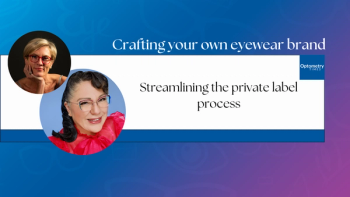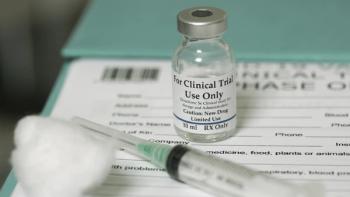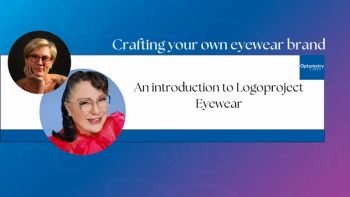
Why the tear film matters
If patients are coming to us for a comprehensive examination, and vision begins at the tear film, why aren’t we routinely and objectively evaluating this critical layer?
Ocular surface disease is a common condition that we are seeing every day in our practices. How many times have you heard or read that? Yet, as I speak to optometrists around the country, there are universal themes with regard to our attitude toward dry eye disease:
• We are not looking unless patients are complaining
• We are not familiar with the Dry Eye Workshop (DEWS) that established four levels of dry eye that direct diagnosis and management1
• We are not quick to adopt the latest technologies that can more accurately and objectively diagnose and guide treatment
• We are worried about getting patients to buy in to management in the absence of overt symptoms
Related:
Why aren’t we evaluating the tear film?
If patients are coming to us for a comprehensive examination, and vision begins at the tear film, why aren’t we routinely and objectively evaluating this critical layer? The biggest change in refractive index occurs when light passes from air to the tear film. If it is unstable, insufficient, or breaking up too quickly, vision suffers.
In 2007, the International Dry Eye Workshop (DEWS) report published guidelines to categorize and manage dry eye.1 Most ODs are under-diagnosing and under-treating. For example, a level-2 patient has moderate symptoms, tear film signs, and corneal staining. According to DEWS, this patient should be treated with cyclosporine. Most of us put this type of patient on artificial tears, going against expert recommendations.
Dry Eye Summit recommendations
A recent study evaluated dry eye disease in a group of patients 55 and over referred for cataract surgery.2 It showed that dry eye prevalence was significantly underestimated. Presenting at the office, 22 percent of patients had a dry eye diagnosis. When properly assessed, 81 percent were found to have the disease. That’s a huge difference! About 50 percent had central corneal staining!2
More recently, the Dry Eye Summit, composed of 30 of the brightest in ocular surface disease, developed new recommendations to encourage more routine screening for dry eye.3 Because research shows signs and symptoms don't always match, screening objectively makes sense.4
The Dry Eye Summit’s recommendations are to evaluate:5
• Patient history
• Staining
• Osmolarity testing
• Lid evaluation
I like the fact the recommendations include only four parameters. Simplicity is essential to screening. There are two relatively new technologies that can help diagnose dry eye objectively. One measures osmolarity, and the other measures inflammation. Both tests have a CPT code and are covered by insurance. They both allow us to quickly measure tear film quality in-office.
Inflammation over osmolarity
Far be it for me to second-guess this group of dry eye experts, but I would argue that inflammation should replace osmolarity. For one, it is less expensive technology to implement-no capital investment or monthly commitment is involved. This makes it a test that all practices could adopt. Second, I think we know better how to treat inflammation vs. hyperosmolarity. Lastly, the InflammaDry (RPS) test shows a sensitivity and specificity of 85 percent and 94 percent, respectively.6 TearLab osmolarity measurements were 73 percent and 92 percent, respectively.7
If you are concerned about asymptomatic dry eye patients heeding your management plan, positive results from the aforementioned objective tests will drive compliance. In addition, your conviction that you are doing the right thing is critical.
Related:
When your dentist sees a cavity, you schedule your appointment to get it filled. Why? Because you want to get to it before you require a root canal, because you want your teeth to last a lifetime. I make the same assumption about my patients. If I see a chronic, progressive disease, I treat it because I truly believe I am doing the right thing. Because I believe my patients come to me because they want healthy eyes that last a lifetime.
We've been reading for years about optometry owning ocular surface disease, yet many of us are not jumping on board. We are optometrists. Ask yourself what an optometrist does. In my mind, our job is to provide clear, comfortable vision for a lifetime. Because vision begins at the tear film, make an ocular surface evaluation part of every exam. If you really look, we will be surprised what you’ve been missing. And your patients will thank you for it.
Quick and simple screening
In my practice, staffers perform a Zone Quick test on one eye if patients are age 25 or over or if any patient has any dry eye symptoms. If patients score 14 or lower on Zone Quick, or if patients are symptomatic, staffers run an InflammaDry test.
Incorporating my staff into data gathering provides me with a lot of information before I even walk into the exam room to see the patient.
I have started a new group on Facebook called “ODs for ocular surface disease.” I encourage you to join there and continue the conversation.
References
1. 2007 Report of the International Dry Eye Workshop. Ocul Surf. 2007 Apr;5(2):67-204
2. Trattler W. Preoperative evaluation of the presbyopic IOL patient: Impact of dry eye and blepharitis. Course, American Academy of Ophthalmology, November 2012.
3. Karpecki PM. The Evolution of Dry Eye. Review of Optometry. Available at:
4. Nichols KK, Nichols JJ, Mitchell GL. The lack of association between signs and symptoms in patients with dry eye disease. Cornea. 2004 Nov;23(8):762-70.
5. Morris S. New Standards for Dry Eye Disease. Optometric Management. Available at:
6. Sambursky R, Davitt WF, Latkany R, et al. Sensitivity and Specificity of a Point-of-Care Matrix Metalloproteinase 9 Immunoassay for Diagnosing Inflammation Related to Dry Eye. JAMA Ophthalmol. 2013 Jan;131(1):24-8.
7. Lemp, Michael A., et al. Tear osmolarity in the diagnosis and management of dry eye disease. AM J Ophthalmol. 2011 May;151(5):792-8.
Newsletter
Want more insights like this? Subscribe to Optometry Times and get clinical pearls and practice tips delivered straight to your inbox.













































.png)


